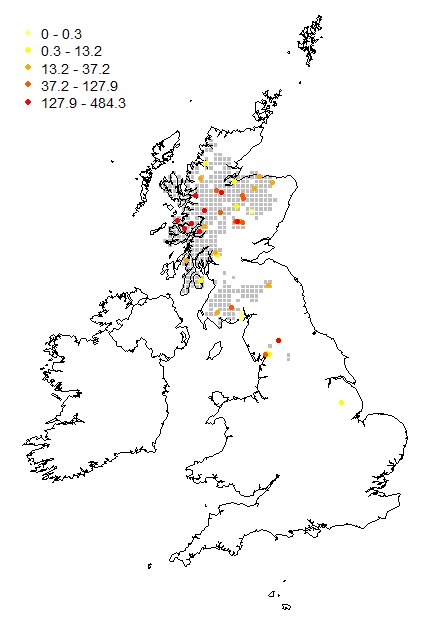Scotch Argus (Erebia aethiops)

© - Eddie John
The Scotch Argus lives in well-defined colonies in rough damp or boggy grassland in mountainous or hilly areas in Scotland up to 500m where its main foodplant is Purple Moor Grass (Molinea caerulea). At its only two (dryer) sites in northern England, Blue Moor Grass (Sesleria caerulea) is the main foodplant. The butterfly is often abundant where it occurs. Overall populations and range appear to be stable. (For further details on this species see http://www.butterfly-conservation.org/).
This chart shows the index of abundance (LCI = Log Collated Index) over time. It shows fluctuations in populations from year to year, and is scaled so that the average index over the whole series is equal to 2 (horizontal line). Further details on the analysis of UKBMS data can be found [here]
This chart shows the average number of butterflies seen on transects between April and October across all sites (fitted values from a Generalised Additive Model). The blue line gives average counts over the full BMS series (1976 to date) and the red line gives the average for the last year.

This map shows symbols for the mean abundance at transect sites, with the colour of the symbol reflecting the level of abundance. Means are over all years. Grey background squares are the occupied cells as shown by the Butterflies for the New Millenium over the previous ten year period.




